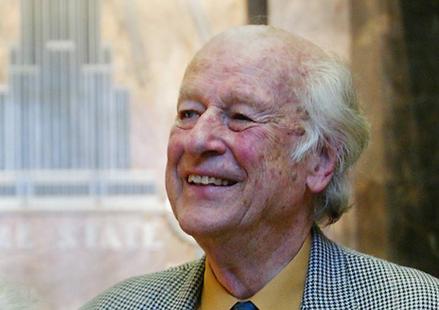With the passing of Ray Harryhausen on Tuesday, the film community lost a legend.
The stop-motion guru whose pioneering techniques are still used today arguably contributed more to the advancement of special effects than anyone in the pre-digital age, setting the groundwork for everything from “Star Wars” to “ParaNorman” to “Avatar.”
But Harryhausen left behind a legacy of unforgettable movie moments.
In chronological order, here’s a sampling of some of the best scenes from his long and influential career.
Joe the Gorilla vs. Primo Carnera from “Mighty Joe Young” (1949)
The defining moment in Harryhausen’s childhood, he often said, was seeing Willis H. O’Brien’s special effects work for “King Kong” in 1933. It’s easy to imagine his excitement when, years later, he got a call to work with his idol on another movie about a giant gorilla.
Although only credited as “first technician,” roughly 90 percent of the actual animation in “Mighty Joe Young” was reportedly done by Harryhausen while O’Brien supervised.
In one particularly impressive scene, Joe, a 10-foot-tall gorilla, wins a tug-of-war match against Primo Carnera, the real-world heavyweight boxing champion. After pulling Carnera into a pool of water, Joe picks him up above his head and playfully chucks him into the audience.
With scenes like this, Harryhausen demonstrated early on an impressive ability to blend live action and animation to an extent no one else had done, making it look like his creations were actually interacting with the real world.
The destruction of the Golden Gate Bridge from “It Came from Beneath the Sea” (1957)
The filmmakers’ initial request to shoot part of the movie’s climactic scene on the San Francisco landmark was rejected by the city fathers, who worried that seeing a movie with a giant mutated octopus destroying the iconic bridge might make citizens less confident in the bridge’s structural integrity.
Thanks to Harryhausen’s miniatures and some guerrilla filmmaking that involved hiding a camera in the back of a bakery truck and secretly filming while driving back and forth across the bridge, the scene came together and remains one of the most memorable monster attacks from B-movie history.
Eagle-eyed viewers, however, might notice that the octopus is really a “sextopus.” To cut down the amount of time it took to prep each shot, Harryhausen only gave his cephalopod six tentacles, not eight.
The Cyclops from “The 7th Voyage of Sinbad” (1958)
Having already destroyed New York, the Golden Gate Bridge, Washington, D.C., and the Coliseum in his earlier sci-fi monster movies, Harryhausen and producer Charles H. Schneer decided to try their hand at fantasy.
No longer bound by the limitations of contemporary settings, Harryhausen’s imagination ran wild.
In “The 7th Voyage of Sinbad,” this culminated with an epic, knock-down-drag-out battle between a Cyclops and a giant dragon.
But these aren’t quite the terrifying monsters audiences would expect. Unlike a lot of modern CG spectacle, Harryhausen managed to imbue his creatures with a remarkable amount of personality — so much so, in fact, that it’s hard not to feel a little sorry for the loser in this fight.After presenting Harryhausen with his first and only Oscar during the 1992 Academy Awards, Tom Hanks remarked, “Some people say ‘Casablanca’ or ‘Citizen Kane’ … I say ‘Jason and the Argonauts’ is the greatest film ever made.”
The 1963 epic fantasy is widely regarded as Harryhausen’s masterwork — even by him. It features some of his most memorable creations, including a seven-headed hydra and Talos, the bronze colossus.
No scene stands out more clearly, though, than Jason’s jaw-dropping battle with seven skeletal warriors.
The entire scene, which is less than five minutes, took more than four months of painstaking work to animate. For segments with all seven skeletons in the shot, Harryhausen could only average about a half-second of footage per day. All told, it’s estimated that the scene required nearly 185,000 individual adjustments.
A full 50 years later, though, the quality of craftsmanship is as apparent as ever. The skeletons, which bear shields emblazoned with some of Harryhausen’s earlier creations — the “sextopus” from “It Came from Beneath the Sea,” the Venusian alien Ymir from “20 Million Miles to Earth,” etc. — interact with the human characters so perfectly that it’s easy to forget that this was made long before motion capture or green screens even existed.
Medusa from “Clash of the Titans” (1981)
Harryhausen’s final film came out after effects-heavy hits like “Star Wars” had killed some of the gee-whiz factor of stop-motion animation, but “Clash of the Titans” is still able to impress on its own merits.
Like other late-period Harryhausen films, “Titans” features a panoply of fantastic creatures, including a giant scorpion, a kraken and Perseus’ winged horse Pegasus.
The scene involving Medusa, however, is the one that pushed stop-motion to an entirely new level. Not only did Harryhausen have to individually animate each of the 12 snakes making up Medusa’s hair, but he also chose to do the scene as if lit by flickering candles.
Harryhausen also chose to make his Medusa far more monstrous than any previous depictions, portraying the Gorgon as more snake than woman. The end result is a scene that feels like straight-up horror.

